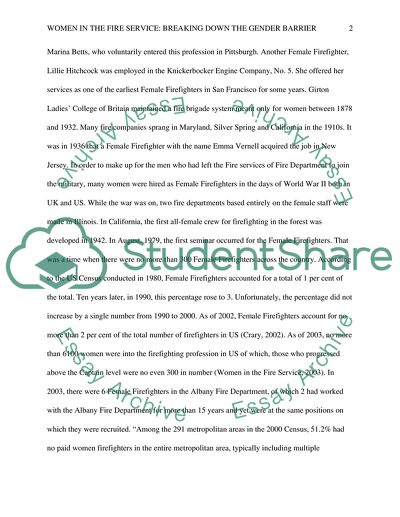Cite this document
(Women in the Fire Service: Breaking Down the Gender Barrier Term Paper, n.d.)
Women in the Fire Service: Breaking Down the Gender Barrier Term Paper. Retrieved from https://studentshare.org/social-science/1755299-women-in-the-fire-service-breaking-down-the-gender-barrier
Women in the Fire Service: Breaking Down the Gender Barrier Term Paper. Retrieved from https://studentshare.org/social-science/1755299-women-in-the-fire-service-breaking-down-the-gender-barrier
(Women in the Fire Service: Breaking Down the Gender Barrier Term Paper)
Women in the Fire Service: Breaking Down the Gender Barrier Term Paper. https://studentshare.org/social-science/1755299-women-in-the-fire-service-breaking-down-the-gender-barrier.
Women in the Fire Service: Breaking Down the Gender Barrier Term Paper. https://studentshare.org/social-science/1755299-women-in-the-fire-service-breaking-down-the-gender-barrier.
“Women in the Fire Service: Breaking Down the Gender Barrier Term Paper”, n.d. https://studentshare.org/social-science/1755299-women-in-the-fire-service-breaking-down-the-gender-barrier.


